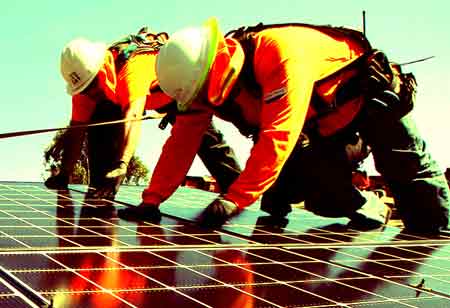Thank you for Subscribing to Energy Business Review Weekly Brief
Different Benefits Of An EPC
EPC is a low-risk means of financing and providing energy efficiency advancements and renewable projects for businesses without the funds, technical experience,

By
Energy Business Review | Thursday, November 17, 2022
Stay ahead of the industry with exclusive feature stories on the top companies, expert insights and the latest news delivered straight to your inbox. Subscribe today.
The EPC is developed between the client and an external organization, with the upgrades funded through cost reductions.
FREMONT, CA: EPC is a low-risk means of financing and providing energy efficiency advancements and renewable projects for businesses without the funds, technical experience, and workforce needed for such projects. The EPC is developed between the client and an external organization, with the upgrades funded through cost reductions.
What is an Energy Performance Contract (EPC)?
An EPC is a low-risk procedure of financing and delivering energy efficiency advancements and renewable projects for businesses that deficit the funds, technical experience, and manpower necessary for such projects.
How does an EPC work?
The EPC is created between the client and an external organization. The energy updates are funded through cost decrease. The earnings from the cost savings, or the renewable energy generated, are utilized to repay the project's costs, comprising the costs of the investment. An EPC assurances a return equal to the price of investment for the client, with the percentage of potential savings accumulated by the client reliant on the type of EPC in place.
As the responsibility for including the cost of the initial investment falls to the external organization through the performance of installed generation or efficiency schemes, EPCs are noticed as fairly low-risk.
What are the advantages of an EPC?
• Financial Advantages
• Secured energy savings
• Deduction in backlog maintenance levels, maintenance costs, and other running costs
• Lessening in CRC Scheme costs
• Creating the prospect for renewable energy generation and income from the Feed-In-Tariff and Renewable Heat Incentive schemes
• Reducing the influence of future energy price rises through significantly reducing energy use.
Wider benefits
Delivering CO2 lowerings and helping to attain corporate CO2 reduction targets. Enhancing the building environment and convenience for occupants through elevated and more efficient heating and cooling systems. As a growing body of evidence indicates, an important advantage is that better building environments can enhance productivity and decrease absenteeism.
Creating a safer environment through enhanced lighting, decreased equipment failures, and better building management systems to support and identify problems.
Investment in buildings and green technologies to support generating local jobs and enhance local skills.
What are the performance objectives of EPCs?
Performance objectives can be based on CO2 savings, energy savings, and producing a certain kWh level of renewable energy per annum. The goal can vary based on the type of EPC.






